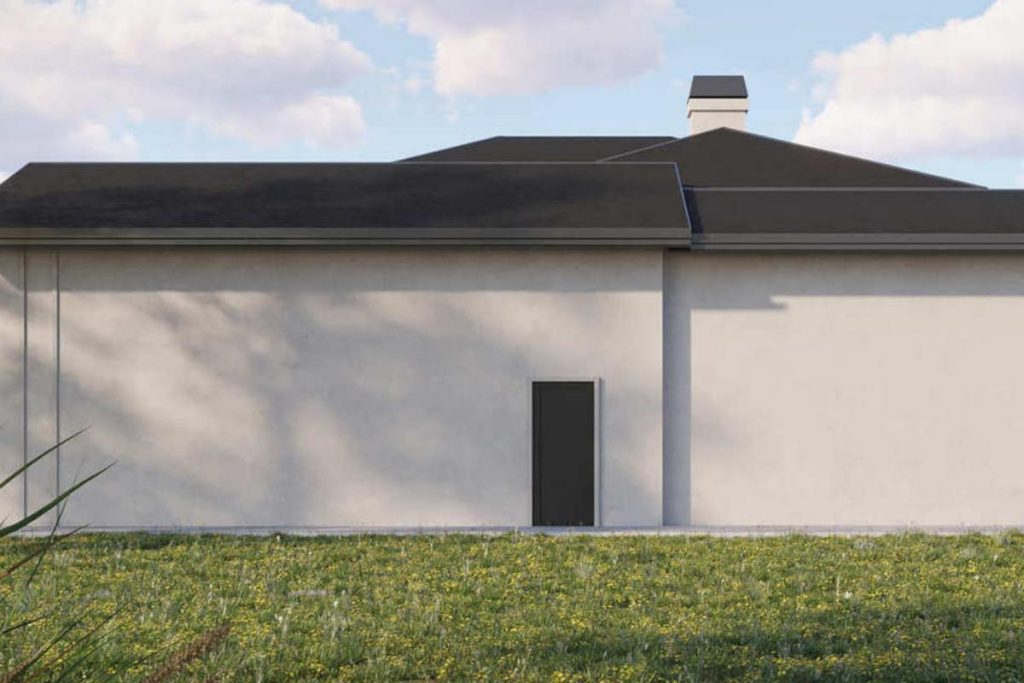The advent of 3D real estate renderings has marked a paradigm shift in how properties are presented and marketed in the digital age. These sophisticated visual representations allow for an immersive exploration of properties, providing a lifelike preview of architectural designs long before construction begins. This article aims to delve into the transformative impact of 3D renderings on the real estate industry, exploring not just the technological advancements that have made such detailed visualizations possible but also the profound effects they have on buyer engagement, marketing strategies, and overall sales process. By offering a virtual walkthrough of properties, 3D renderings bridge the gap between conceptual designs and tangible realities, enabling clients to visualize their future homes or commercial spaces with unprecedented clarity and precision.
Technological Foundations of 3D Real Estate Renderings
A blend of advanced software and cutting-edge technologies underpins the creation of high-quality 3D real estate renderings. At the forefront of this creative process are powerful 3D modeling and rendering programs such as Autodesk 3ds Max, SketchUp, and Lumion, each offering unique tools tailored for architectural visualization. These platforms enable designers to construct detailed 3D models of buildings with intricate architectural elements, textures, and environmental settings, transforming flat architectural plans into dynamic, three-dimensional spaces.
The realism in these renderings is further enhanced by sophisticated rendering techniques that simulate natural lighting, shadows, and reflections. Programs like V-Ray and Corona Renderer are instrumental in this aspect, employing complex algorithms to mimic how light interacts with different materials and surfaces, thereby adding depth and authenticity to the virtual models. These renderings can include nuanced details such as the play of sunlight through windows at different times of the day or the reflection of surrounding landscapes on glass facades, providing a truly immersive visual experience.
Integrating landscape and environmental elements into 3D renderings is crucial in contextualizing the property’s surroundings. Software like Lumion excels in this area, offering extensive libraries of trees, plants, and urban fixtures that can be added to scenes to create lifelike outdoor environments. This enhances the aesthetic appeal of the renderings and helps clients understand how the property interacts with its environment.
The technical process of creating 3D renderings also involves meticulous attention to detail regarding textures and materials. High-resolution images create realistic surfaces for floors, walls, and furnishings, ensuring that every aspect of the interior and exterior design is accurately represented. This level of detail requires technical expertise and a deep understanding of architectural design and materials, underscoring the interdisciplinary nature of 3D architectural visualization.
In summary, the technological foundations of 3D real estate renderings lie in the sophisticated interplay between advanced software, rendering techniques, and artistic vision. The ability to create detailed, realistic visualizations of properties has not only transformed how real estate is marketed but also enhanced the decision-making process for buyers, offering a glimpse into the future of architectural design and property development.
Benefits and Applications in the Market
Integrating 3D renderings into the real estate market has brought forth many benefits for both buyers and sellers, revolutionizing traditional sales approaches and enhancing the property buying experience. For buyers, the primary advantage lies in visualizing properties in precise detail, transcending the limitations of physical site visits. This is particularly beneficial in the current global landscape, where travel restrictions or time constraints might impede the ability to visit properties in person. Through 3D renderings, potential buyers can explore every nook and cranny of a property, understanding the spatial dynamics, design aesthetics, and functional aspects of the space, significantly aiding in making informed purchasing decisions.
From the perspective of sellers and real estate agents, 3D renderings serve as a powerful marketing tool, enabling them to showcase properties in the best possible light. High-quality renderings can highlight key selling points of a property, from luxurious interior designs to breathtaking views, in a way that photographs or traditional floor plans cannot. This can dramatically increase the property’s appeal, attracting a wider pool of potential buyers and, consequently, increasing the likelihood of a sale. Furthermore, 3D renderings allow for marketing properties still under construction, providing a glimpse of the finished product and facilitating pre-sales, which can be crucial for funding ongoing development projects.
Another significant application of 3D renderings is in the customization and personalization of properties. Buyers looking to purchase new developments often have the option to customize finishes, layouts, or design elements. 3D renderings can visualize these customizations in real-time, allowing buyers to experiment with different options and make choices that best suit their preferences, enhancing customer satisfaction and engagement.
Challenges and Considerations in Implementing 3D Renderings
Adopting 3D rendering technology in real estate is challenging despite the clear advantages. One of the primary considerations is the cost and resource investment required to produce high-quality 3D visuals. The creation of detailed renderings involves sophisticated software and hardware and skilled professionals who can bring architectural visions to life. The initial investment in 3D rendering technology and expertise may be a significant barrier for small real estate firms or independent agents.
Technical challenges also abound, particularly in terms of rendering accuracy and realism. Ensuring that 3D renderings accurately reflect the final architectural outcome requires a deep understanding of materials, lighting, and architectural design. Discrepancies between renderings and the completed property can lead to misaligned buyer expectations, potentially impacting customer satisfaction and trust. Therefore, balancing artistic representation and realistic depiction is crucial in creating 3D renderings.
Moreover, as the real estate market increasingly relies on digital platforms, the technical compatibility of 3D renderings with various online interfaces and devices becomes a key consideration. Ensuring renderings are viewable and interactive across different web platforms, mobile devices, and virtual reality headsets requires careful planning and optimization, adding another layer of complexity to the implementation process.
While 3D renderings offer transformative potential for the real estate market, their successful integration requires careful consideration of financial, technical, and operational factors. Overcoming these challenges involves investment in technology and talent and a commitment to maintaining high standards of accuracy and realism in visual representations. As the real estate industry continues to evolve, navigating these considerations will be paramount for firms looking to leverage the full potential of 3D rendering technology.
Future Trends: The Evolution of 3D Visualization in Real Estate
As we look toward the horizon of real estate marketing and sales, the evolution of 3D visualization technology is poised to revolutionize the industry further. Emerging trends and advancements in related technologies are set to expand the capabilities and applications of 3D renderings, offering even more immersive and interactive experiences for buyers and innovative marketing solutions for sellers.
Integration with Emerging Technologies
One of the most promising trends is the integration of 3D renderings with emerging technologies such as virtual reality (VR) and augmented reality (AR). VR allows potential buyers to immerse themselves in a fully navigable 3D environment, providing a lifelike experience of walking through a property. This level of immersion can significantly enhance the emotional connection to a space, making it easier for buyers to envision themselves living or working there. AR, on the other hand, allows for the overlay of 3D renderings onto real-world views through a smartphone or tablet, offering a unique perspective on how new development will fit into an existing landscape or how renovations can transform a space.
Artificial Intelligence and Customization
Integrating artificial intelligence (AI) with 3D rendering processes can potentially personalize the property viewing experience to unprecedented levels. AI algorithms can analyze buyer preferences and behaviors to tailor 3D property tours, highlighting features of particular interest and suggesting customizations or alternative properties that align with the buyer’s desires. This level of personalization not only enhances the buyer’s experience but also increases the efficiency of the sales process by focusing on properties that closely match the buyer’s criteria.
Sustainability and Eco-conscious Design

Sustainability is becoming increasingly important in real estate development, and 3D renderings are well-positioned to support this trend. Future 3D visualization tools may incorporate simulation features that allow developers and buyers to assess the environmental impact of different design choices, from energy consumption to sustainable materials. This capability can facilitate more eco-conscious decisions in the design phase and help market properties to environmentally aware buyers.
Challenges and Ethical Considerations
As 3D visualization technology advances, it raises new challenges and ethical considerations. Ensuring the accuracy and integrity of 3D renderings will be paramount to maintaining trust between buyers and sellers. Whether intentional or accidental, misrepresentation can lead to legal challenges and damage a firm’s reputation. As such, establishing industry standards and best practices for creating and using 3D renderings will be crucial.
Conclusion

The future of real estate marketing and sales is inextricably linked to the advancement of 3D visualization technology. As these tools become more sophisticated and integrated with VR, AR, and AI, the potential to create engaging, personalized, and immersive property experiences is boundless. However, successfully adopting these technologies will require a careful balance of innovation, ethical considerations, and a commitment to accuracy and realism. As we move forward, the real estate industry must navigate these challenges thoughtfully, ensuring that 3D renderings continue to serve as a valuable tool for buyers and sellers alike, shaping the future of real estate in the digital age.











